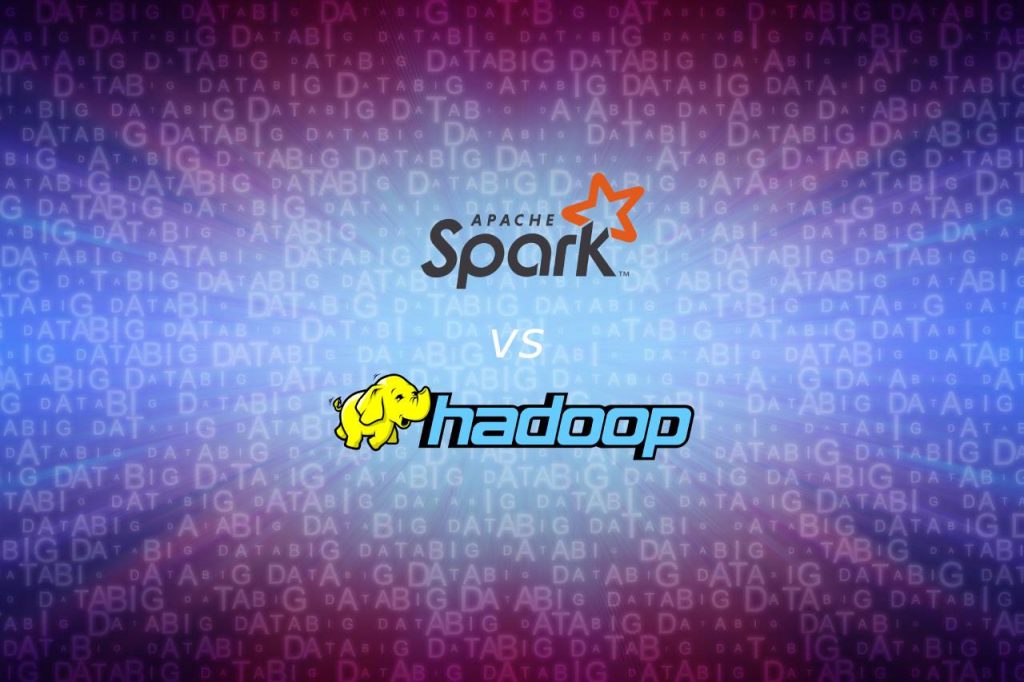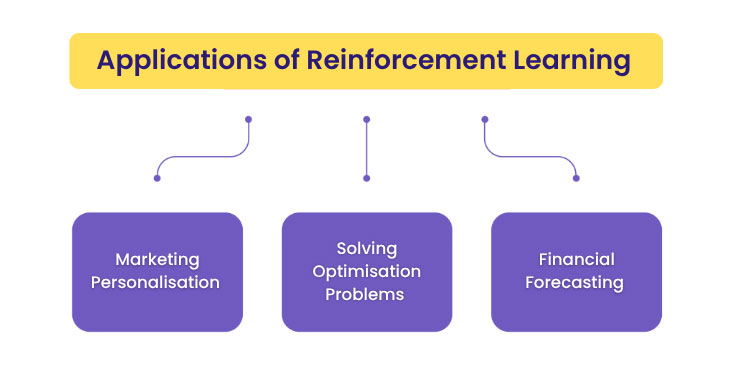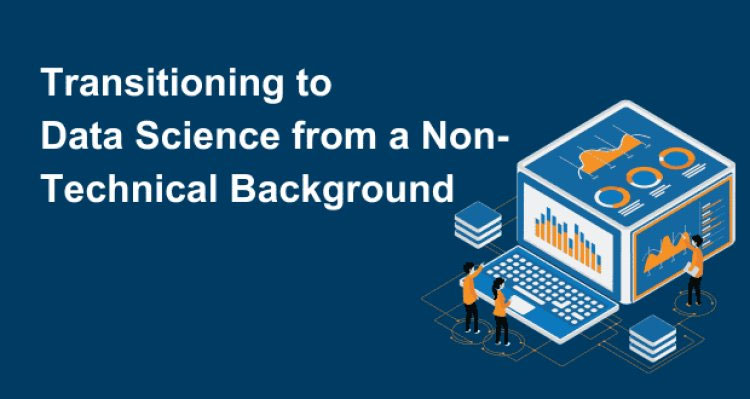Mastering Big Data Analysis: Your Ultimate Guide to Pyspark Interview Questions and Answers
In today’s rapidly evolving world, the sheer volume of data generated has led to an unprecedented demand for professionals who can harness this data to drive business insights. As a result, careers in big data analytics have become incredibly lucrative, with organizations seeking individuals who can expertly navigate through vast datasets. If you’re eyeing a career in this dynamic field, mastering Pyspark is your golden ticket. In this article, we’ll delve into the most asked Pyspark interview questions, its advantages over Hadoop, and how you can embark on a successful journey as a Big Data analyst.
1. What is Big Data?
Big Data refers to massive and complex datasets that are beyond the capabilities of traditional data processing tools. It encompasses various types of data, including structured, semi-structured, and unstructured data, making it challenging to process, analyze, and extract insights using conventional methods.
The term “big data” refers to datasets that are so large and complex that traditional data processing tools and methods are insufficient to handle them efficiently. The exact size that qualifies as “big data” can vary depending on the context and the capabilities of the technology being used. However, big data is generally characterized by the “Three Vs”:
- Volume: Big data involves datasets that are beyond the capacity of conventional databases and storage systems. It can range from terabytes (TB) to petabytes (PB) and beyond.
- Velocity: Big data is generated at an unprecedented speed, often in real time or near real time. This includes data from sources like social media, sensors, online transactions, and more.
- Variety: Big data encompasses diverse types of data, including structured data (e.g., relational databases), semi-structured data (e.g., JSON, XML), and unstructured data (e.g., text, images, videos).
You’re reading the article, 10 Most Asked Pyspark Interview Questions and Answers.
Additionally, some discussions on big data also consider the following Vs:
- Veracity: This refers to the quality and accuracy of the data. Big data sources can be noisy, containing errors, inconsistencies, and missing values.
- Value: The ultimate goal of big data analysis is to extract valuable insights and knowledge from the data, enabling better decision-making and creating business value.
- Variability: Big data can exhibit variations in terms of data flow, sources, and formats, making it challenging to manage and analyze.
It’s important to note that what is considered “big” today might not be as big in the future due to advancements in technology and storage capabilities. The definition of big data continues to evolve as our ability to process and analyze data improves.
In summary, the size of big data is not fixed, but rather defined by its volume, velocity, and variety. It encompasses datasets that are too large and complex to be effectively processed using traditional methods, requiring specialized tools and techniques for analysis.
You’re reading the article, 10 Most Asked Pyspark Interview Questions and Answers.
2. Best Big Data Tools
The realm of big data is populated with a plethora of tools, each designed to address specific challenges. Apache Hadoop and Pyspark stand out as two leading contenders. While Hadoop revolutionized the industry by introducing the concept of distributed computing, Pyspark took it a step further by enhancing performance and usability.
The field of big data analysis is enriched with a variety of powerful tools designed to process, analyze, and gain insights from large and complex datasets. Here are some of the best big data analysis tools that have gained significant traction:
- Apache Hadoop: One of the pioneers in the big data space, Hadoop introduced the concept of distributed processing. It consists of the Hadoop Distributed File System (HDFS) for storage and the MapReduce programming model for parallel processing. Hadoop’s ecosystem includes various tools like Hive for querying, Pig for data flow scripting, and HBase for NoSQL database capabilities.
- Apache Spark: A versatile and fast data processing framework, Spark provides in-memory data processing, enabling faster analytics. It supports a wide range of data processing tasks, including batch processing, real-time stream processing, machine learning, and graph processing. Spark’s APIs are available in multiple languages like Scala, Java, Python, and R.
- Apache Flink: Flink is a stream processing framework known for its low-latency and high-throughput capabilities. It can process data in real-time and support event time processing, making it suitable for applications like real-time analytics and fraud detection.
- Apache Cassandra: As a distributed NoSQL database, Cassandra excels at handling large amounts of data across multiple commodity servers while providing high availability and fault tolerance. It’s designed for write-heavy workloads and is used by companies dealing with high-velocity data.
- Apache Kafka: Kafka is a distributed event streaming platform that can handle high-throughput, real-time data feeds. It is commonly used for building data pipelines, real-time analytics, and handling large volumes of data streams.
- Elasticsearch: Elasticsearch is a search and analytics engine designed for fast searching and analysis of large volumes of data. It’s often used to build applications that require full-text search, log analysis, and data visualization.
- Splunk: Splunk is a powerful log analysis and monitoring tool that enables organizations to collect, index, and analyze machine-generated data. It’s widely used for IT operations, security, and business intelligence.
- Tableau: Tableau is a popular data visualization tool that allows users to create interactive and shareable dashboards. It’s particularly useful for analyzing and presenting insights from large datasets in a visually appealing manner.
- Databricks: Databricks provides a unified analytics platform built on top of Apache Spark. It simplifies the process of setting up Spark clusters and offers collaborative features for data engineers, data scientists, and analysts.
- RapidMiner: RapidMiner is a data science platform that offers tools for data preparation, machine learning, and predictive analytics. It’s suitable for building and deploying data-driven applications.
- Microsoft Power BI: Power BI is a business analytics tool that enables users to create interactive and visually compelling reports and dashboards. It can connect to a wide range of data sources for analysis.
- KNIME: KNIME is an open-source platform for data analytics, reporting, and integration. It provides a visual interface for building data workflows and supports a variety of data processing and analysis tasks.
You’re reading the article, 10 Most Asked Pyspark Interview Questions and Answers.
The choice of the best tool depends on your specific use case, data volume, processing speed, and the skills of your team. Often, organizations use a combination of these tools to address different aspects of big data analysis and achieve comprehensive insights from their data.
3. Why Choose Pyspark?
PySpark is the Python API (Application Programming Interface) for Apache Spark, an open-source, distributed computing system designed to process large datasets in a fast and fault-tolerant manner.
Spark was initially developed in Scala, but its Python API, PySpark, allows users to interface with Spark using Python code. This integration opens the doors for Python enthusiasts to harness the capabilities of Spark without needing to delve into Scala or Java.
Pyspark, an open-source data processing framework, offers a seamless combination of speed, ease of use, and versatility. It provides a Python API for Spark, making it more accessible to developers and data scientists who are familiar with Python programming.
With Pyspark, you can process large datasets faster than traditional tools, thanks to its in-memory computation capabilities.
You’re reading the article, 10 Most Asked Pyspark Interview Questions and Answers.
4. Pyspark vs Hadoop
In the world of big data, where processing and analyzing massive datasets are paramount, two heavyweights have emerged: PySpark and Hadoop. While both are part of the Apache ecosystem and address similar challenges, they do so in distinct ways. Let’s embark on a journey to understand the differences, advantages, and use cases of PySpark and Hadoop.
Understanding Hadoop
Hadoop, often hailed as the pioneer of distributed data processing, introduced a groundbreaking concept: the ability to store and process enormous datasets across a cluster of commodity hardware. Its core components include the Hadoop Distributed File System (HDFS) for storage and the MapReduce programming model for parallel processing.
Advantages of Hadoop:
- Batch Processing: Hadoop’s MapReduce is designed for batch processing, making it suitable for analyzing historical data or performing large-scale computations.
- Data Storage: HDFS enables the storage of vast datasets across a distributed cluster, providing fault tolerance and scalability.
- Ecosystem: Hadoop boasts a rich ecosystem of tools such as Hive for querying, Pig for data flow scripting, and HBase for NoSQL capabilities.
- Longevity: Hadoop has been around for a significant time and has established itself as a reliable choice for processing big data.
You’re reading the article, 10 Most Asked Pyspark Interview Questions and Answers.
Challenges of Hadoop:
- Disk-Based Processing: Hadoop’s MapReduce paradigm involves writing intermediate results to disk, leading to slower processing speeds compared to in-memory solutions.
- Complexity: Writing and managing MapReduce jobs can be complex and requires Java programming expertise.
- Latency: Hadoop’s focus on batch processing introduces latency, which is not ideal for real-time analytics and interactive querying.
You’re reading the article, 10 Most Asked Pyspark Interview Questions and Answers.
Exploring PySpark
PySpark, on the other hand, is the Python API for Apache Spark, a framework designed to provide lightning-fast, in-memory data processing. PySpark takes the strengths of Spark and combines them with Python’s simplicity and popularity.
Advantages of PySpark:
- In-Memory Processing: PySpark harnesses the power of in-memory processing, resulting in significantly faster data manipulation and analysis.
- Ease of Use: Python’s user-friendly syntax makes PySpark accessible to a wider audience, eliminating the need to learn Java.
- Versatility: PySpark supports not only batch processing but also real-time stream processing, machine learning, and graph processing.
- Interactive Analysis: PySpark’s interactive shell facilitates exploratory data analysis and on-the-fly experimentation.
Challenges of PySpark:
- Resource Intensity: In-memory processing requires substantial memory resources, which may limit its usability for extremely large datasets.
- Learning Curve: While PySpark is accessible to Python developers, learning the nuances of distributed computing concepts might still pose a learning curve.
You’re reading the article, 10 Most Asked Pyspark Interview Questions and Answers.
When to Choose Which?
- Choose Hadoop When: You have a large volume of data for batch processing, and you are already familiar with the MapReduce programming model. Additionally, if you have an established Hadoop ecosystem with tools like Hive and HBase, it might make sense to stick with Hadoop.
- Choose PySpark When: You prioritize speed and versatility, need to perform real-time or interactive data analysis, or want to leverage Python’s simplicity. If your team is skilled in Python or you prefer the ease of Python over Java, PySpark can be a game-changer.
While PySpark and Hadoop are both potent tools for big data processing, they cater to different needs and priorities. Hadoop’s legacy lies in batch processing and its robust ecosystem, while PySpark’s forte is in-memory processing and Python’s accessibility. The choice ultimately hinges on your specific use case, existing skill set, and the performance and speed requirements of your big data analytics endeavors.
Though both Hadoop and Pyspark are products of the Apache Software Foundation, they cater to different needs. Hadoop’s MapReduce paradigm, while groundbreaking, suffered from performance limitations due to disk-based data processing.
This paved the way for Pyspark, which utilizes in-memory processing, making it significantly faster. Apache, recognizing these limitations, announced Hadoop as outdated, promoting Pyspark as the preferred solution for big data analytics.
You’re reading the article, 10 Most Asked Pyspark Interview Questions and Answers.
Pyspark Interview Questions
Before you embark on your Pyspark journey, it’s crucial to prepare for the interview process. Here are some frequently asked Pyspark interview questions to get you started:
1. Explain the concept of lazy evaluation in PySpark.
2. What are the differences between transformations and actions in PySpark?
3. How can you cache data in PySpark?
4. What are PySpark SQL functions?
5. How does Spark handle data partitioning and distribution?
6. Explain the difference between narrow transformations and wide transformations in PySpark.
7. What is a DataFrame in PySpark?
8. How can you perform join operations on DataFrames in PySpark?
9. What is a checkpoint in PySpark?
10. How does PySpark achieve fault tolerance?
You’re reading the article, 10 Most Asked Pyspark Interview Questions and Answers.
Pyspark Interview Questions and Answers for 2025
Here are the answers to all the questions that you might want to know in order to have a successful interview.
Question 1: Explain the concept of lazy evaluation in PySpark.
Answer: Lazy evaluation in PySpark refers to the practice of delaying the execution of operations until it is absolutely necessary. Transformations on RDDs (Resilient Distributed Datasets) are not executed immediately when called, but rather build a lineage of transformations. Only when an action is invoked, such as a count or collect, are these transformations actually executed. This optimizes performance by allowing Spark to optimize the execution plan and avoid unnecessary computations.
Question 2: What are the differences between transformations and actions in PySpark?
Answer: Transformations are operations on RDDs that create a new RDD, such as map(), filter(), and reduceByKey(). These are lazily evaluated and build a lineage. Actions, on the other hand, are operations that return a value or write data to an external storage system, such as count(), collect(), and saveAsTextFile(). Actions trigger the execution of transformations and generate results.
You’re reading the article, 10 Most Asked Pyspark Interview Questions and Answers.
Question 3: How can you cache data in PySpark?
Answer: You can cache an RDD or DataFrame in PySpark using the cache() or persist() methods. Caching allows you to store the data in memory for faster access during iterative computations or when the same data is reused multiple times.
Question 4: What are PySpark SQL functions?
Answer: PySpark SQL functions are built-in functions that allow you to perform operations on columns of DataFrames. These functions include mathematical, string manipulation, date/time, and aggregation functions. For example, selectExpr(), groupBy(), sum(), and concat() are PySpark SQL functions.
Question 5: How does Spark handle data partitioning and distribution?
Answer: Spark distributes data across partitions in a cluster. Each partition contains a subset of the data and is processed by a single task. Data partitioning and distribution are managed by the Spark framework, allowing for parallel processing and optimal resource utilization.
You’re reading the article, 10 Most Asked Pyspark Interview Questions and Answers.
Question 6: Explain the difference between narrow transformations and wide transformations in PySpark.
Answer: Narrow transformations are operations where each input partition contributes to only one output partition, such as map() and filter(). Wide transformations involve operations where each input partition contributes to multiple output partitions, leading to shuffling of data, as seen in groupByKey() or reduceByKey().
Question 7: What is a DataFrame in PySpark?
Answer: A DataFrame in PySpark is a distributed collection of data organized into named columns. It is conceptually equivalent to a table in a relational database or a data frame in R or Python. DataFrames provide a higher-level API for data manipulation and support both SQL queries and functional transformations.
You’re reading the article, 10 Most Asked Pyspark Interview Questions and Answers.
Question 8: How can you perform join operations on DataFrames in PySpark?
Answer: You can perform join operations on DataFrames in PySpark using the join() method. Join types include inner, outer, left, and right joins. The method takes the second DataFrame and the join condition as arguments.
Question 9: What is a checkpoint in PySpark?
Answer: A checkpoint in PySpark is a mechanism to truncate the lineage of an RDD to ensure fault tolerance. It saves the data to a reliable distributed file system (such as HDFS) and discards the lineage information. This can be useful for iterative algorithms to prevent lineage buildup.
Question 10: How does PySpark achieve fault tolerance?
Answer: PySpark achieves fault tolerance through lineage information. When an RDD is created through transformations, it keeps track of its lineage, which represents the sequence of transformations that led to its creation. In case a partition is lost due to node failure, the lost data can be recomputed using the lineage information.
You’re reading the article, 10 Most Asked Pyspark Interview Questions and Answers.
Remember that while these answers provide a solid foundation, it’s important to dive deeper and understand the concepts thoroughly for a successful interview.
Pyspark Jobs & Salaries in India
The Indian job market is ripe with opportunities for skilled Pyspark professionals. As businesses increasingly adopt big data analytics, the demand for qualified experts is soaring. As a fresher, you can kick-start your career by taking up roles like Data Analyst, Junior Data Scientist, or Big Data Engineer.
With the right training and certifications, you can command impressive salaries, often ranging from INR 5 to 10 lakhs per annum at a fresher level, depending on your skill set and the organization’s scale.
You’re reading the article, 10 Most Asked Pyspark Interview Questions and Answers.
Pursuing a Career in Big Data Analysis
To embark on a successful career as a Big Data analyst, follow these steps:
Step 1: Acquire the Necessary Skills
Begin by mastering the basics of Python programming, as Pyspark heavily relies on Python. Familiarize yourself with core big data concepts, distributed computing, and SQL.
Step 2: Learn Pyspark
Delve into Pyspark tutorials and documentation. Understand how to work with DataFrames, manipulate data, and execute transformations and actions.
Step 3: Practical Application
Practice is key. Work on personal projects, such as analyzing datasets, building predictive models, or implementing real-time data processing.
You’re reading the article, 10 Most Asked Pyspark Interview Questions and Answers.
Step 4: Gain Certifications
Certifications validate your skills and enhance your credibility. Consider pursuing certifications like Masters in Data Science With Power BI by ConsoleFlare, Databricks Certified Associate Developer for Apache Spark, or Databricks Certified Associate SQL Analyst.
You’re reading the article, 10 Most Asked Pyspark Interview Questions and Answers.
Step 5: Networking
Connect with professionals in the field, and attend seminars, webinars, and conferences to stay updated on the latest trends and opportunities.
In conclusion, Pyspark is your gateway to a thriving career in big data analytics. Its speed, flexibility, and compatibility with Python make it a preferred choice for organizations seeking to make data-driven decisions. By mastering Pyspark and acing those interview questions, you can position yourself as a sought-after Big Data analyst and secure high-paying roles in this exciting domain.
You’re reading the article, 10 Most Asked Pyspark Interview Questions and Answers.
So, take the plunge into the world of Pyspark, and pave your way to a successful and rewarding career in big data analysis.
Hope you liked reading the article, Your Ultimate Guide to Pyspark Interview Questions and Answers. Please share your thoughts in the comments section below.
For more such content and regular updates, follow us on Facebook, Instagram, LinkedIn










